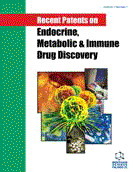Abstract
A growing body of evidence has implicated the plasminogen activating system in various aspects of neurophysiology and pathophysiology. In ischemic stroke, blood-brain barrier (BBB) regulations, typically involving matrix metalloproteinases (MMPs), inhibitors tissue inhibitors of metalloproteinases (TIMPs) and the low density lipoprotein receptor- related protein/alpha 2-macroglobulin receptor (LRPs) as mediators became interesting since tissue plasminogen activator (tPA)-related BBB breakdown with risk of secondary hemorrhage was considered to involve these mediators too. The mechanism by which tPA implements its actions within the central nervous system (CNS) has been the topic of much controversy. Binding of plasminogen to surfaces is of crucial importance in regulating the function of this system. tPA can modulate permeability of the neurovascular unit in physiological conditions and pathological events exacerbating injury in ischemic stroke, vascular dementia, traumatic brain injury or neurotoxic events. The plasminogen activating enzyme system is widely appreciated for its role in fibrinolysis and thrombolysis and in other areas related to remodelling of the extracellular matrix. However, this enzyme system also has a major impact in the central nervous system under pathological circumstances. The aim of this review is to revise the last patents and news to understand the mechanism by which t-PA modulates BBB permeability.
Keywords: BBB, brain diseases, CNS, LRP, neurodegenerative diseases, plasmin, plasminogen, tPA, neuroinflammation, lipoprotein receptor-related proteins
 46
46





















